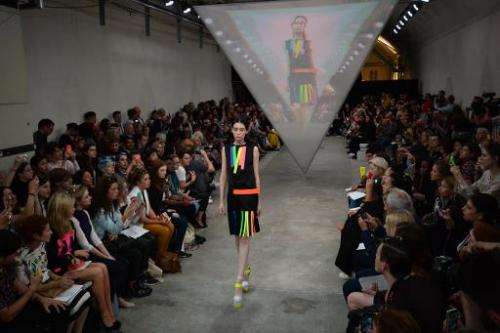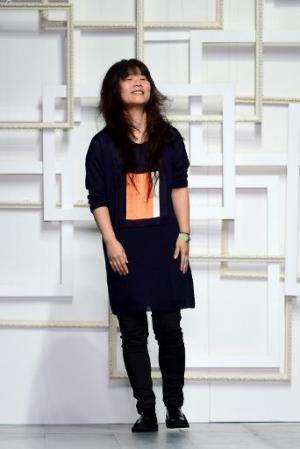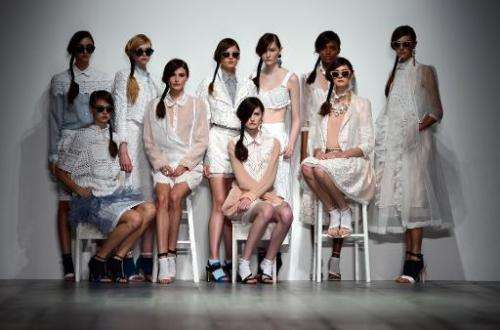Turning tweets to tenners: London Fashion gets digital (Update)

London Fashion Week opened on Friday with a new push for online sales, as designers seek to turn the democratisation of the catwalk through live streaming and Twitter into cold, hard cash.
The five-day event will showcase the creative talents of more than 80 designers including Burberry, Vivienne Westwood, Mary Katrantzou and Christopher Kane, including a one-off show by New York-based Marchesa.
More than 5,000 visitors are expected—but as elsewhere, the abundance of live streaming, and instant updates on Twitter and Instagram mean the latest looks are now available to anyone with an Internet connection.
Bigger and more established names in New York, Paris and Milan are seizing on ways to turn this new interactive and global audience into sales.
But like a teenager showing her parents how to use the latest smartphone, London—traditionally the young upstart of the fashion world—intends to lead the way.
Google enlisted
"London is set to be the most tech-savvy fashion capital in the world," said Natalie Massenet, the chairman of the British Fashion Council (BFC) and founder of designer fashion portal Net-a-Porter.com.
"And the overall aim is to drive sales."

The BFC, which organises London Fashion Week, has enlisted Internet giant Google to help in its efforts to get designers to boost their online presence, and a raft of new initiatives are planned this week.
Burberry Prorsum will sell the nail varnish used in its runway show on Monday directly to Twitter users during the event, as the social media site trials its new "Buy Now" button.
Fans of the funky label House of Holland will be able to watch Saturday's show live online and try the clothes on their very own digital avatar as the models walk out.
And Hunter boots will be posting curated video clips from its catwalk show almost instantaneously on Twitter, and targeting content based on users' geographic location.
More than half the designers here still have to set up a way of selling their wares online, but Peter Fitzgerald, a top sales executive at Google UK, has been holding boot camps and "digital surgeries" to show them the way.
The potential rewards are huge—online clothing sales are set to reach £10.7 billion ($17.4 billion, 13.4 billion euros) in Britain this year, 17 percent of total spend, according to market research firm Mintel.
"The UK is so advanced in how much people spend and their appetite for fashion," Fitzgerald said.
"But what we're also showing designers is that the Internet is truly borderless and many of them are getting over half of their sales now from outside the UK. So that world of e-commerce is just awakening."

'New visual language'
New technology is not just a way of making money, however. For some designers in London it is a tool for creativity and even an inspiration in its own right.
The label Fyodor Golan, one of rising stars in London, used smartphones to film its show on Friday and streamed the blurry pictures live on a giant inverted pyramid descending onto the catwalk from the ceiling.
The collection itself was inspired by the "new visual language that's all around us", where people express their mood by posting pictures on social media, said Fyodor Podgorny, the Latvian-Russian designer who forms half of the label.
The catwalk was a riot of colour—neon orange, green, turquoise and pink, as well as multicoloured stripes, incorporated into the clothing or protruding on a stiffened piece of fabric out the side of a dress.
In among the colours are strips of photographs, of footballers on a pitch and images of flowers, but they are only fleetingly recognisable, just as "in watching a lot of things on Instagram, you don't understand what it is", Podgorny told AFP.
© 2014 AFP




















